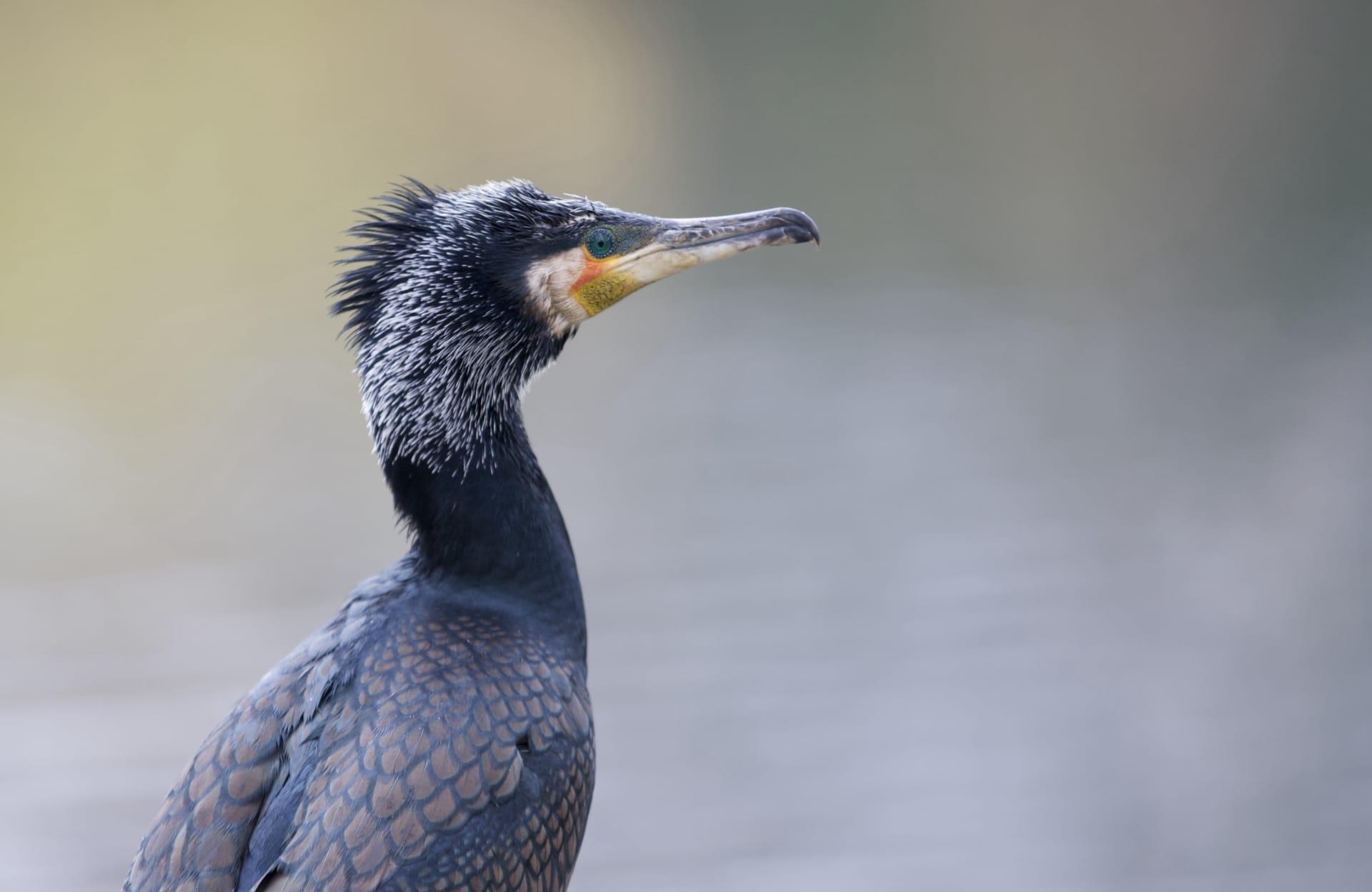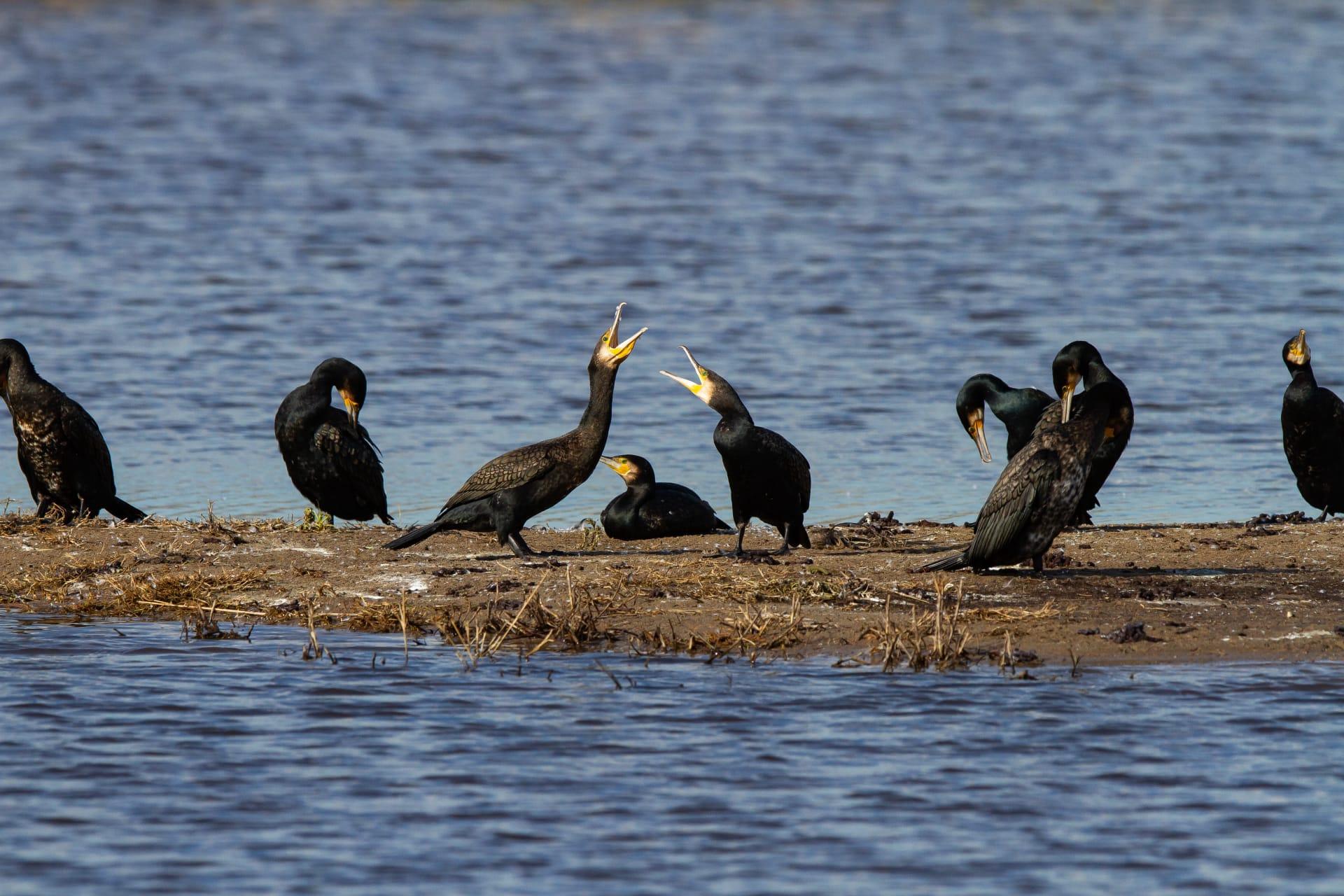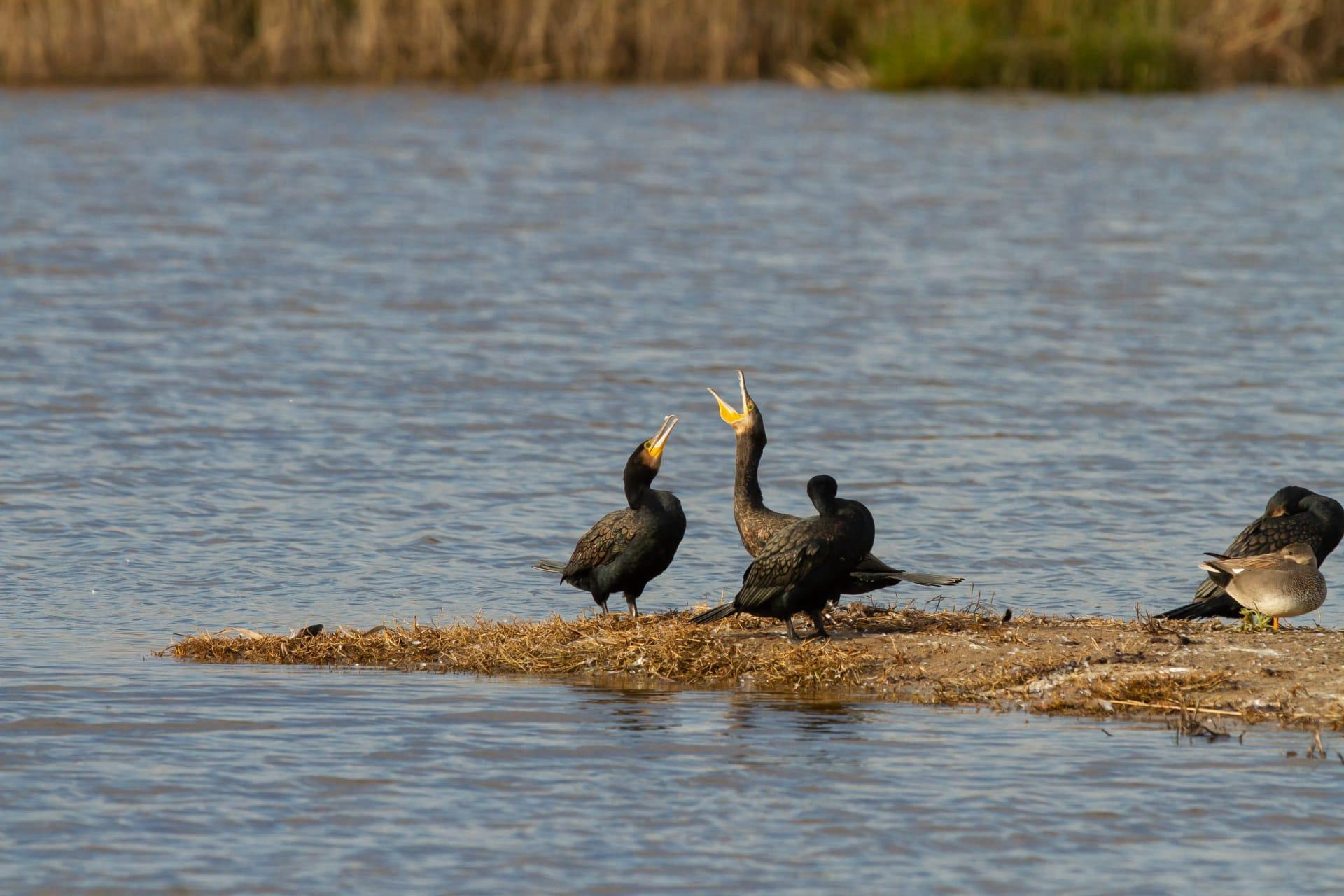Cormorant
- Home /
- Mini Encyclopedia /
- Animal /
- Cormorant
1
Cormorants, belonging to the family Phalacrocoracidae, are medium-to-large aquatic birds, distinctively known for their long necks and hooked bills. This family comprises over 40 species, including the well-known Great Cormorant and the Double-crested Cormorant. Each species has adapted uniquely, but all share certain traits like webbed feet and excellent diving capabilities. Morphologically, cormorants range in size from the Pygmy Cormorant, measuring about 45 cm in length, to the Flightless Cormorant, reaching up to 100 cm.
Cormorants are found globally, except in the central Pacific islands. They are most commonly seen along coastlines, but many species are also found inland along rivers and lakes. For instance, the Great Cormorant has a wide distribution, inhabiting parts of North America, Europe, Asia, and Australia. These birds prefer areas with abundant fish, their primary food source. Seasonal migrations are common among cormorants, with some species traveling over 3000 kilometers between breeding and wintering grounds.

2
Question: Do cormorants harm fish populations and local fishing industries?
Answer: This is a common misconception. While cormorants do feed on fish, their impact on fish populations is often exaggerated. Studies show that cormorants predominantly consume non-commercial fish species or those in abundance. Moreover, their hunting efficiency is balanced by their role in maintaining healthy aquatic ecosystems. For example, by controlling certain fish populations, cormorants can prevent overfishing of smaller species, thus supporting biodiversity. It's important to recognize that cormorants, like all wildlife, play a vital role in their ecosystems and should not be unfairly blamed for natural predatory behaviors.

3
Cormorants have developed several unique survival strategies. One of their most notable traits is their exceptional diving ability. They can dive up to 45 meters deep, though average dives are usually around 10 meters. Their webbed feet and streamlined bodies aid in swift underwater movements. Unlike most water birds, cormorants have less preen oil, which allows their feathers to get wetter, reducing buoyancy and making diving easier. After diving, they can often be seen with their wings outstretched, drying their feathers in the sun.
Another survival tactic is their social behavior. Cormorants often nest in colonies, which provides safety in numbers. These colonies can range from a few pairs to thousands of birds, usually located on cliffs, islets, or in trees. This communal living helps in predator detection and defense. Additionally, cormorants are opportunistic feeders. They primarily eat fish but will also consume crustaceans, amphibians, and occasionally small birds, adapting their diet based on availability and environment.

4
In ecosystems, cormorants hold a significant role as both predator and prey. As top predators in aquatic environments, they help control fish populations, which can be beneficial in preventing the overpopulation of certain species. This predatory role also influences the structure of fish communities, potentially aiding in the maintenance of a balanced ecosystem.
The presence of cormorants also affects other species. For instance, their nesting habits contribute to habitat modification. The accumulation of their guano enriches the soil, which can affect plant life and subsequently, the overall habitat. Furthermore, cormorants serve as prey for larger predators like eagles and large raptors. Their role in the food web underscores the interconnected nature of ecosystem components and the importance of biodiversity.

5
Film: "The Cormorant’s Tale" (United Kingdom, 2018) explores the life and habitats of cormorants across Europe. The documentary focuses on their adaptive skills, diverse habitats from coastal areas to inland waters, and the challenges they face due to environmental changes and human activities.
Book: "Cormorants, Darters, and Pelicans of the World" (United States, 2006) by Paul A. Johnsgard. This comprehensive guide covers all species of cormorants, darters, and pelicans. It provides detailed information on their biology, behavior, and conservation status, along with illustrations and range maps.
Book: "The Secret Life of Cormorants" (Canada, 2013) by Ann Nightingale. This book delves into the unique behaviors and characteristics of cormorants, emphasizing their role in Canadian ecosystems. Nightingale combines scientific research with narrative to create an engaging and informative read.